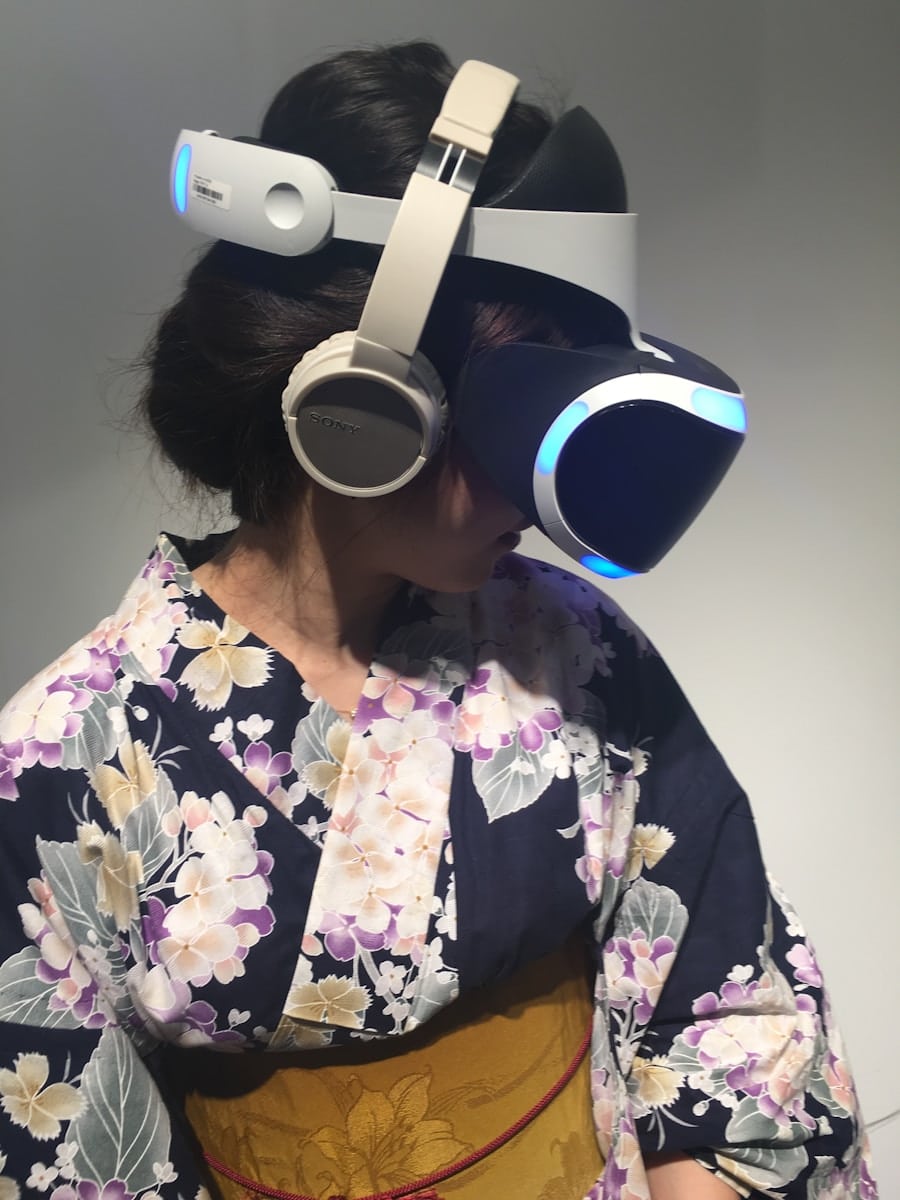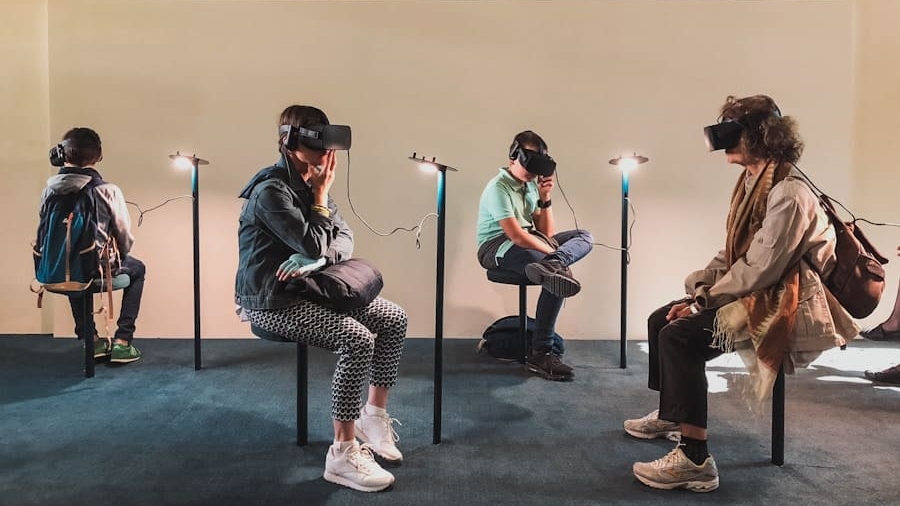In recent years, virtual reality (VR) has emerged as a transformative tool in various sectors, including education, healthcare, and corporate training. One of the most significant applications of VR technology is in diversity training, where it offers innovative solutions to age-old challenges. Traditional diversity training methods often rely on lectures, workshops, and discussions that can sometimes feel abstract or disconnected from real-world experiences.
In contrast, VR immerses participants in realistic scenarios that challenge their perceptions and biases, making the learning experience more impactful and memorable. The rise of VR in diversity training can be attributed to several factors. First, the increasing awareness of the importance of diversity and inclusion in the workplace has prompted organizations to seek more effective training methods.
Companies are recognizing that fostering an inclusive environment is not just a moral imperative but also a business necessity. Research has shown that diverse teams are more innovative and perform better financially. As a result, organizations are investing in VR technology to create engaging and effective training programs that resonate with employees on a deeper level.
Key Takeaways
- VR is increasingly being used in diversity training to create immersive and impactful learning experiences.
- Empathy simulations in VR have a significant impact on diversity training by allowing participants to step into the shoes of others and understand their experiences.
- VR enhances understanding of different perspectives by creating realistic and immersive environments that promote empathy and understanding.
- VR training can effectively address unconscious bias by providing a safe space for participants to confront and challenge their preconceived notions.
- Immersive experiences in VR play a crucial role in fostering inclusivity by creating a sense of presence and connection with diverse perspectives.
The Impact of Empathy Simulations on Diversity Training
Breaking Down Barriers
For instance, a VR program might simulate the experience of a person with a disability navigating a workplace environment, highlighting the barriers they face and the importance of accessibility.
Fostering Deeper Understanding
This immersive experience fosters empathy by allowing participants to feel what it is like to be marginalized or misunderstood. The impact of empathy simulations extends beyond mere awareness; they can lead to profound changes in attitudes and behaviors. Studies have shown that individuals who engage in empathy-building exercises are more likely to exhibit inclusive behaviors in their daily interactions.
Real-World Impact
For example, a company that implemented VR empathy simulations reported a significant increase in employees’ willingness to support diversity initiatives and advocate for their colleagues from underrepresented groups. By experiencing the world through another’s eyes, participants develop a deeper understanding of the systemic issues that contribute to inequality, ultimately leading to more compassionate and informed actions.
How VR Enhances Understanding of Different Perspectives

One of the most compelling advantages of VR in diversity training is its ability to enhance understanding of different perspectives. Traditional training methods often rely on theoretical discussions about diversity, which can sometimes lead to misunderstandings or oversimplifications of complex issues. In contrast, VR provides a platform for experiential learning, where participants can engage with diverse narratives in a visceral way.
This immersive approach allows individuals to confront their biases and assumptions directly. For example, a VR training module might place participants in a scenario where they must navigate a workplace conflict involving cultural misunderstandings. By experiencing the situation from multiple viewpoints, participants gain insights into the motivations and feelings of all parties involved.
This multi-faceted understanding is crucial for fostering effective communication and collaboration in diverse teams. Furthermore, VR can simulate real-world situations that employees may encounter, such as microaggressions or exclusionary practices, enabling them to practice responses in a safe environment before facing these challenges in reality.
Addressing Unconscious Bias Through VR Training
Unconscious bias is a pervasive issue that affects decision-making processes in organizations, often leading to inequitable outcomes in hiring, promotions, and team dynamics. Traditional diversity training often falls short in addressing these biases because it relies on self-reflection and discussion rather than experiential learning. VR training offers a unique solution by immersing participants in scenarios that reveal their unconscious biases in real-time.
For instance, a VR program might simulate a hiring process where participants must evaluate candidates based solely on their qualifications while being subtly influenced by their biases. This experience can be eye-opening, as individuals may realize how their preconceived notions affect their judgments. By confronting these biases head-on within the immersive environment of VR, participants are more likely to recognize and address them in their professional lives.
This proactive approach not only raises awareness but also equips employees with strategies to mitigate bias in their decision-making processes.
The Role of Immersive Experiences in Fostering Inclusivity
Immersive experiences play a pivotal role in fostering inclusivity within organizations. By engaging employees through VR, companies can create an environment where individuals feel valued and understood. These experiences can range from role-playing scenarios that highlight the challenges faced by marginalized groups to interactive storytelling that showcases diverse perspectives.
The key is that these immersive experiences allow participants to connect emotionally with the content, making the lessons learned more impactful. Moreover, immersive experiences can help break down barriers between employees from different backgrounds. When individuals engage with one another through shared VR experiences, they are more likely to develop camaraderie and mutual respect.
For example, team-building exercises conducted in VR can encourage collaboration among diverse groups by placing them in situations where they must work together to solve problems or navigate challenges. This shared experience fosters a sense of belonging and community, which is essential for creating an inclusive workplace culture.
Overcoming Challenges in Diversity Training with VR

Overcoming Cost Barriers
While the potential of VR training is immense, one significant hurdle is the cost associated with developing and deploying VR training modules. High-quality VR content requires substantial investment in technology and expertise, which may be prohibitive for smaller organizations or those with limited budgets. However, as technology advances and becomes more accessible, it is likely that costs will decrease over time.
Ensuring Inclusive and Representative Content
Another challenge lies in ensuring that VR training is inclusive and representative of diverse experiences. Developers must be mindful of creating content that accurately reflects the complexities of various identities and cultures. This requires collaboration with subject matter experts and individuals from diverse backgrounds during the development process to ensure authenticity and relevance.
Providing Ongoing Support and Resources
Organizations must be prepared to provide ongoing support and resources for employees after completing VR training to reinforce the lessons learned and encourage continued growth.
Measuring the Effectiveness of VR in Diversity Training
To justify investments in VR diversity training programs, organizations must establish metrics for measuring effectiveness. Traditional evaluation methods often rely on post-training surveys or assessments that may not capture the long-term impact of the training on behavior and attitudes. In contrast, VR offers unique opportunities for data collection through analytics embedded within the training modules.
Additionally, pre- and post-training assessments can provide insights into changes in attitudes toward diversity and inclusion among employees. Longitudinal studies can further assess whether these changes translate into improved workplace dynamics over time.
By employing a combination of qualitative and quantitative measures, organizations can gain a comprehensive understanding of the effectiveness of their VR diversity training initiatives.
Future Applications and Developments in VR for Diversity Training
The future of VR in diversity training holds exciting possibilities as technology continues to evolve. One potential development is the integration of artificial intelligence (AI) into VR training modules, allowing for personalized learning experiences tailored to individual needs and learning styles. AI could analyze participant behavior during simulations and adapt scenarios accordingly, providing targeted feedback and recommendations for improvement.
Furthermore, as remote work becomes increasingly prevalent, VR could facilitate virtual team-building exercises that transcend geographical boundaries. Employees from different locations could come together in a shared virtual space to engage in diversity training activities, fostering connections across diverse teams regardless of physical distance. This capability would not only enhance inclusivity but also promote collaboration among global teams.
As organizations continue to prioritize diversity and inclusion initiatives, the role of VR will likely expand beyond training alone.
By leveraging immersive technology throughout various stages of employment, organizations can create a more holistic approach to diversity and inclusion that resonates with employees at every level.
In conclusion, the rise of virtual reality in diversity training represents a significant shift toward more effective and engaging learning experiences. By harnessing the power of empathy simulations and immersive environments, organizations can foster understanding, address unconscious bias, and create inclusive workplaces that celebrate diversity. As technology continues to advance, the potential applications for VR in this field will only expand, paving the way for a more equitable future in the workplace.
A related article discussing the best tablets for everyday use can be found at this link. This article provides insights into the top tablets available in the market that can be used for various everyday tasks. It complements the discussion on VR supporting diversity training through empathy simulations by highlighting the importance of technology in enhancing different aspects of our lives.
FAQs
What is VR?
VR stands for virtual reality, which is a computer-generated simulation of an environment that can be interacted with in a seemingly real or physical way by a person using special electronic equipment, such as a helmet with a screen inside or gloves fitted with sensors.
How is VR supporting diversity training?
VR is supporting diversity training by providing empathy simulations that allow users to experience different perspectives and situations related to diversity and inclusion. This immersive experience helps to build empathy and understanding, ultimately leading to more inclusive and diverse workplaces.
What are empathy simulations in VR?
Empathy simulations in VR are virtual experiences designed to help users understand and empathize with the experiences of others. These simulations can include scenarios related to race, gender, sexual orientation, disabilities, and other aspects of diversity and inclusion.
How does VR enhance diversity training?
VR enhances diversity training by creating a safe and immersive environment for users to experience and understand different perspectives. It allows for interactive learning and can help to break down barriers and biases by fostering empathy and understanding.
What are the benefits of using VR for diversity training?
The benefits of using VR for diversity training include increased empathy and understanding, improved retention of learning, the ability to practice real-world scenarios in a safe environment, and the potential to create more inclusive and diverse workplaces.

